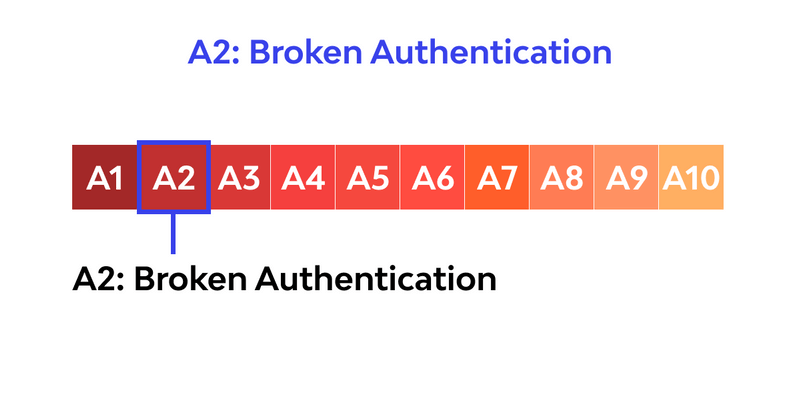
Authentication is the process of verifying a user’s identity. Broken authentication is a vulnerability that allows attackers to gain unauthorized access to a system or application. This can be done by exploiting weaknesses in the authentication mechanism, such as weak passwords, poor session management, or insecure authentication protocols.
Broken authentication is one of the most common types of web application vulnerability. It is also one of the most serious, as it can allow an attacker to take over a user’s account, steal sensitive data, or even compromise the entire system.
Examples Of Broken Authentication
Weak passwords:Many users use weak passwords that are easy to guess or crack. An attacker can use a brute-force attack or a dictionary attack to crack a weak password.Poor session management:If an attacker can steal a user’s session ID, they can impersonate the user and gain access to their account. This can be done by exploiting vulnerabilities in the session management mechanism, such as session fixation or cross-site request forgery (CSRF).Insecure authentication protocols:Some authentication protocols are insecure and can be exploited by attackers. For example, the SSL/TLS protocol is vulnerable to the POODLE attack, which allows an attacker to downgrade the encryption used to protect a communication channel.Session Fixation Attack:In this scenario, an attacker tricks a user into using a session ID that the attacker has control over. This allows the attacker to gain unauthorized access to the user’s account or impersonate them.Brute Force Attacks:Attackers employ automated tools to guess usernames and passwords repeatedly until they gain access to an account. Weak password policies and a lack of account lockout mechanisms make these attacks more likely to succeed.Credential Stuffing:Attackers exploit users who reuse passwords across multiple websites. When one site is compromised, attackers use the same credentials to access other accounts, potentially causing significant damage.
Mitigation Strategies
Use Secure Authentication Protocols:Use secure authentication protocols, such as OAuth 2.0 or OpenID Connect. For example, use OAuth 2.0 to authenticate users with third-party applications, such as Facebook or Twitter.Use a Web Application Firewall (WAF):A WAF can help to protect against a wide range of web application attacks, including broken authentication attacks. For example, use a WAF to block attacks that attempt to exploit session fixation or CSRF vulnerabilities.
Implement Strong Password Policies:Enforce complex password requirements, including a mix of upper and lower case letters, numbers, and special characters. Require users to update their passwords periodically.Example: Passwords must be at least 12 characters long and contain at least one uppercase letter, one lowercase letter, one number, and one special character.Use Multi-Factor Authentication (MFA):MFA adds an extra layer of security by requiring users to provide two or more pieces of evidence to confirm their identity. This makes it significantly more challenging for attackers to gain unauthorized access.Example: Users must provide a password and a one-time code sent to their mobile device for authentication.Implement Account Lockout Mechanisms:After several failed login attempts, temporarily lock the account. This thwarts brute force attacks.Example: Lock the account for 15 minutes after five failed login attempts.Secure Session Management:Implement secure session management practices to protect session tokens. Generate unique session IDs for each user and regularly refresh them. Ensure that session IDs are only transmitted over secure connections.Regularly Review and Audit User Permissions:Perform regular audits to identify and remove unnecessary or unauthorized user privileges. This minimizes the attack surface and limits the potential damage if an account is compromised.Educate Users:Train users to recognize phishing attempts and avoid using weak passwords. Encourage them to use unique passwords for different accounts to reduce the risk of credential stuffing.
Also Read:





